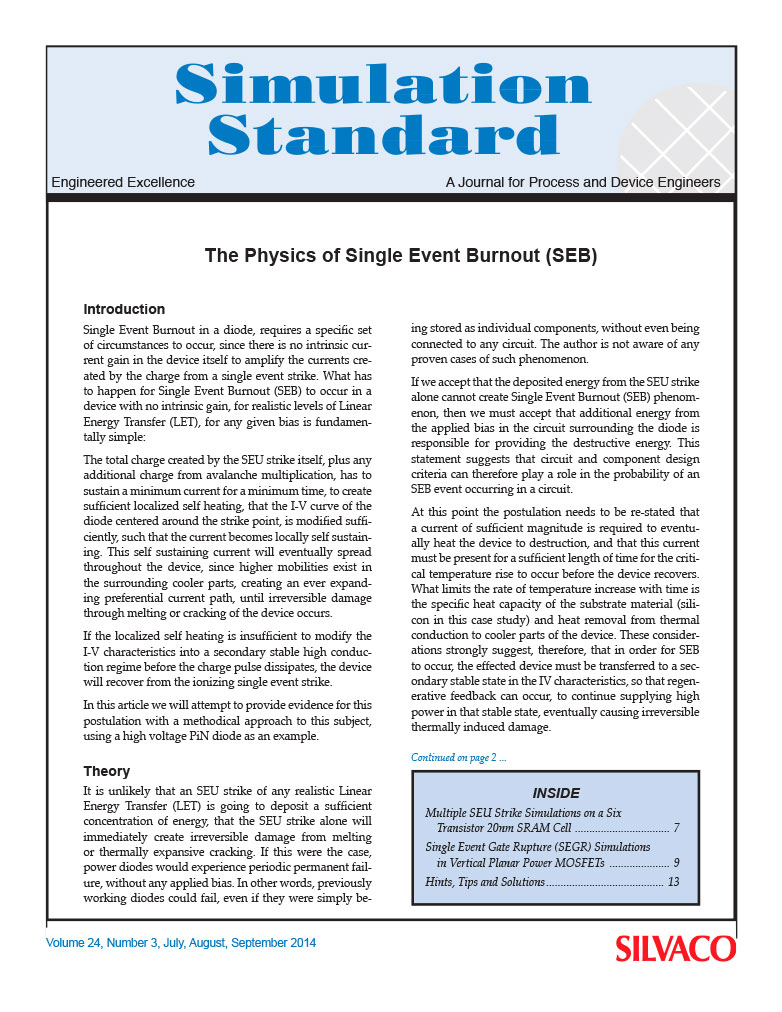The Physics of Single Event Burnout (SEB)
Introduction
Single Event Burnout in a diode, requires a specific set of circumstances to occur, since there is no intrinsic current gain in the device itself to amplify the currents created by the charge from a single event strike. What has to happen for Single Event Burnout (SEB) to occur in a device with no intrinsic gain, for realistic levels of Linear Energy Transfer (LET), for any given bias is fundamentally simple:
The total charge created by the SEU strike itself, plus any additional charge from avalanche multiplication, has to sustain a minimum current for a minimum time, to create sufficient localized self heating, that the I-V curve of the diode centered around the strike point, is modified sufficiently, such that the current becomes locally self sustaining. This self sustaining current will eventually spread throughout the device, since higher mobilities exist in the surrounding cooler parts, creating an ever expanding preferential current path, until irreversible damage through melting or cracking of the device occurs.
If the localized self heating is insufficient to modify the I-V characteristics into a secondary stable high conduction regime before the charge pulse dissipates, the device will recover from the ionizing single event strike.
In this article we will attempt to provide evidence for this postulation with a methodical approach to this subject, using a high voltage PiN diode as an example.



